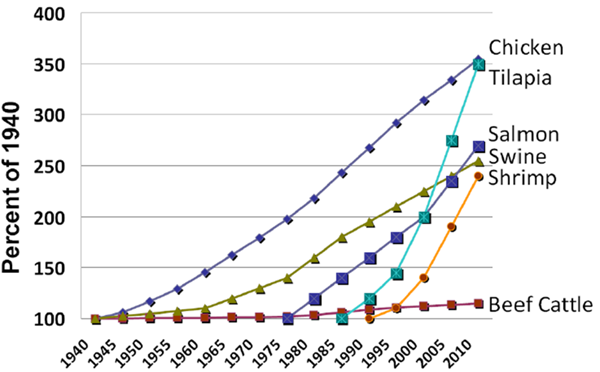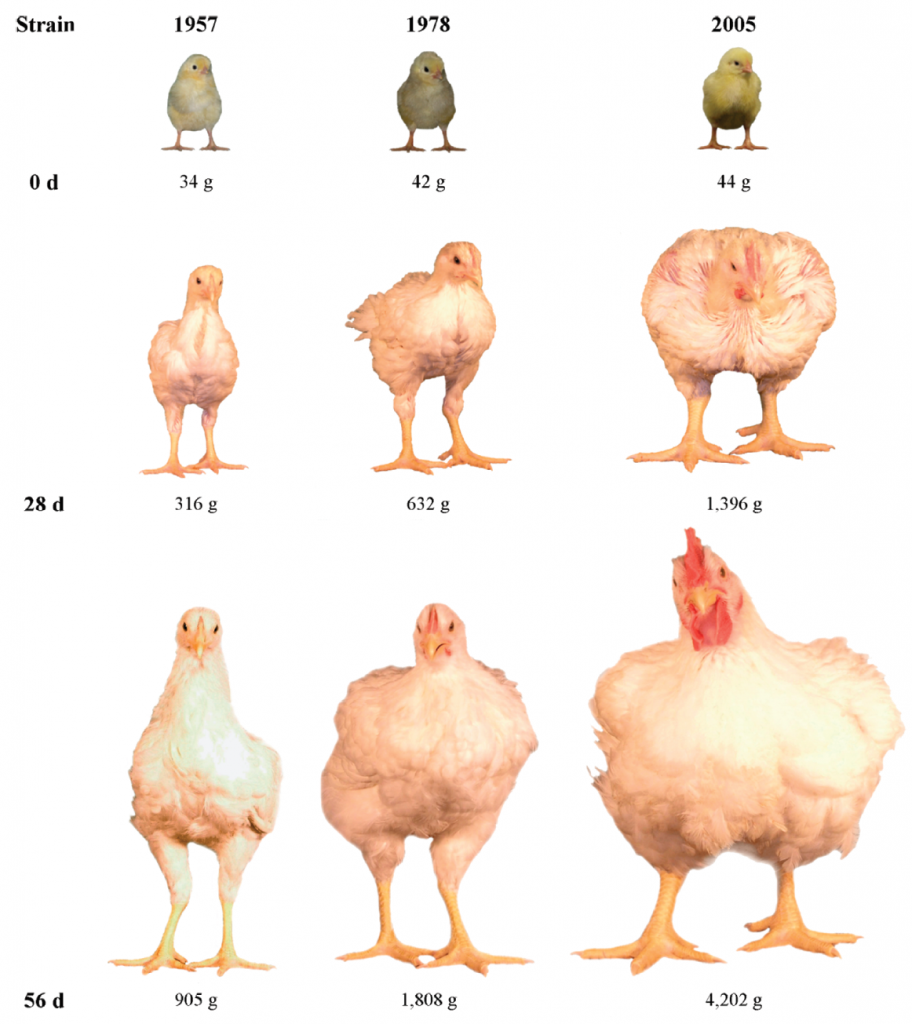> Industry & Business
Animal genetics: supersize me
During the last decades aquaculture has been the world’s fastest growing animal-based food sector (See AniMag’ n°6 – Animals), due to new technologies and improved practices. One major driving force for the competitiveness of animal production chains is the improvement of feed digestibility, as diet is the largest cost for farmers. Feed Conversion Ratio, which is the ability of the animal to transform the feed into animal protein, has dramatically improved in fish species.
Relative genetic gain in growth rate:
Genetic progress has transformed animals in highly effective biological machines to produce meat, eggs and milk, thus reducing the quantities of vegetal ingredients to obtain more affordable animal food. The improvement in genetic has traditionally focused on a number of traits related to productivity of growing and reproductive animals, such as high growth rate, carcass yield, prolificity.
However, the race for higher growth is facing new biological, ethical and environmental challenges. Traits such as robustness under hot climates, in diversified production systems, but also animal welfare and meat quality have to be integrated in genetic selection procedures. It requires large R&D resources from genetic companies, who are using modern techniques such as genomic selection and who are facing long ROI. International competition towards economies of scale and vertical integration has accelerated market consolidation since the 1980s. The concentration of animal genetics sector is by far the highest compared to other agricultural markets such as animal feeds, seeds or fertilizers :
• Broiler genetics (meat): 2 companies supply 95% of the commercial breeding stock.
• Layer genetics (eggs): 2 companies control an estimated 90% of layer poultry genetics worldwide.
• Turkeys : 2 companies supply virtually all the industrial turkey genetics worldwide.
• Pigs : 4 companies leading pig breeders supply almost all global pig stock.


